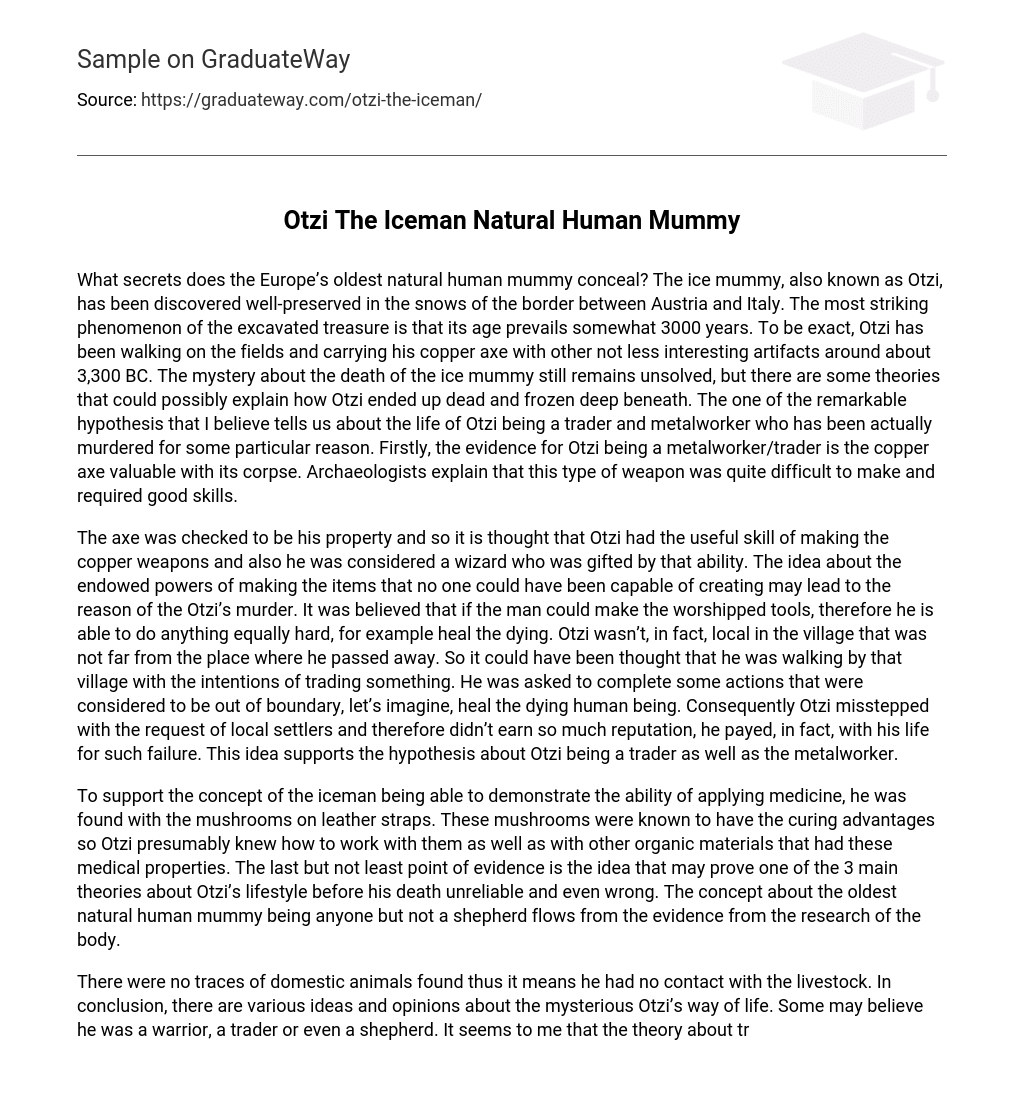Europe’s oldest natural human mummy, known as Otzi, conceals secrets waiting to be discovered. Found well-preserved in the snow on the border between Austria and Italy, this ice mummy is a marvel that dates back approximately 3000 years. In fact, Otzi lived around 3300 BC, roaming the fields with his copper axe and other intriguing artifacts. Despite being frozen in time, the mystery surrounding Otzi’s death remains unsolved. However, there are theories that attempt to shed light on how he ended up deceased and preserved beneath the ice. One remarkable hypothesis suggests that Otzi was a trader and metalworker who was likely murdered for unknown reasons. Evidence supporting this theory lies in the valuable copper axe found alongside his remains. Archaeologists explain that crafting such a weapon required great skill and was no easy feat.
It is speculated that the axe discovered with Otzi belonged to him, indicating his proficiency in crafting copper weapons and being perceived as a talented magician. This belief in his capacity to create objects possessing extraordinary powers could have resulted in his murder. The villagers held the belief that if Otzi possessed the ability to fashion revered tools, he must also possess the capability to perform other challenging tasks such as healing those near death. Despite not originating from the nearby village, Otzi might have been passing through with intentions of engaging in trade. However, he was requested to undertake tasks deemed beyond his capabilities, like healing someone on the brink of dying. Consequently, Otzi’s inability to fulfill these requests led to a loss of respect and ultimately cost him his life. This hypothesis supports the notion that Otzi functioned as both a trader and a metalworker.
By discovering mushrooms on leather straps, it is evident that the iceman possessed knowledge of medicinal applications. Otzi was familiar with these mushrooms, as well as other organic materials with healing properties. Moreover, this finding challenges the reliability of one of the three main theories regarding Otzi’s lifestyle prior to his death, which suggests he was not a shepherd. This conclusion is supported by research conducted on the body.
There were no signs of domestic animals discovered, indicating that he did not interact with livestock. In summary, there are different perspectives on the enigmatic lifestyle of Otzi. Some speculate that he was a warrior, a merchant, or even a shepherd. Personally, I find the theory of him being a trader/metal worker most compelling due to the evidence of weapons and medical supplies found. The underlying assumption that he was murdered because of his skills adds depth and complexity to the portrayal of Otzi and prehistoric times.





